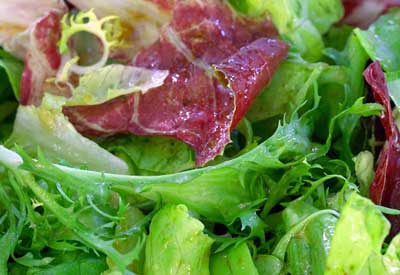Backyard gardeners are growing their own organic lettuce at home for its crisp, colorful leaves full of vitamins and minerals — the deeper its color, the more nutrition. A cool season annual, lettuce (Lactuca sativa) is a member of the Asteraceae family and has been cultivated for ages, perhaps longer than any other vegetable crop.
So, grow your own! You’ll be able to enjoy varieties not available at your local grocery store and the fresh flavor can’t be beat. You can even plant some after last frost; continuous plantings will yield harvests late into the season. Plus the peace of mind you’ll gain from raising them without chemicals? Priceless!
Fun Fact: The average American eats about 30 lbs of this popular salad green every year. Health benefits include low calories, high fiber and zero fat. Lettuce leaves also contains lactucarium, a mild sedative known to induce sleep without harmful side effects.

FREE SHIPPING!
Lettuce Seeds
Easy to grow and quick to mature, lettuce is a backyard garden favorite.
View allEasy to grow, quick to mature heirloom lettuce is a vegetable garden favorite. Planting instructions are included with each seed packet and shipping is FREE!
Quick Guide: Planting, Growing & Harvesting Lettuce
- Choose from head or leaf lettuce
- Start indoors or plant outside in spring
- Needs partial shade and well-drained soil — protect from heat
- Can be planted every two weeks for a constant supply
- Harvest by cutting at the base of the leaves or heads
- Pests include earwigs, aphids, slugs, deer and rabbits
Site Preparation
Lettuce will require partial shade in warm climates, plus rich, sandy soil and regular water. Work the soil thoroughly (break up any clumps and remove debris) prior to planting. If planting seeds, rake the surface smooth. Transplants can tolerate a rougher planting bed. Dig in plenty of garden compost and soil amendments rich in nitrogen to promote good leaf development.
Tip: Add kelp meal to planting beds. It’s packed with micronutrients and is especially good for supplying trace minerals to edible crops.
How to Plant
Sow seeds directly into prepared garden beds two to four weeks before the last expected frost. Try broadcasting seeds over a wide row and gently raking them in to a depth of 1/8 inch deep. Plant head lettuce, such as crisphead and iceberg, and thin crops gradually to allow the most robust plants to mature into heads. For a steady supply of leaf varieties, plant every 10-20 days and remember to shade crops in the summer, or they will bolt and turn bitter. To promote rapid growth, apply Alaska® Fish Fertilizer or other organic liquid fertilizer once or twice during the gardening season.
Avoid high heat and disturbing roots for a bumper lettuce crop. Mulching with a quality organic compost will help deter weeds and conserve moisture loss (see What’s in Commercial Compost).
Greens are an excellent choice for hydroponic systems. Our indoor kits are the best available and ship complete with everything you need to get started.

Harvesting and Storage
Harvest outer leaves to encourage inner, tender leaves to grow. Lettuce is crispest if picked in the morning. Use a pruning knife to cut heads just below the lower leaves, or pull them out by the roots. Head and romaine types mature about 70 days from seed; leaf types matures in about 40 days.
Leaf lettuce and mesclun will regrow if just the leaves are harvested. Water and harvest again a few weeks later. For best flavor, pick in the early morning, rinse and eat fresh, or refrigerate immediately. Store, loosely packed in plastic bags, in the vegetable crisper.
Insect & Disease Problems
Use OMRI Listed diatomaceous earth to protect crops from earwigs, aphids and slugs which can occasionally cause problems on the crop. Prevent foliage rot by providing good soil drainage and air circulation around crops. Watering on bright sunny mornings will allow the leaves to dry by evening.
Seed Saving Instructions
There is only a slight chance of cross-pollination between lettuces. As a precaution, separate by 25 feet from other types that are going to seed. Allow plants to bolt and form seed stalks. Seed heads may need to be protected from bird damage and rain when drying. Seeds are produced over a 2-3 week period and will require repeated harvesting.











